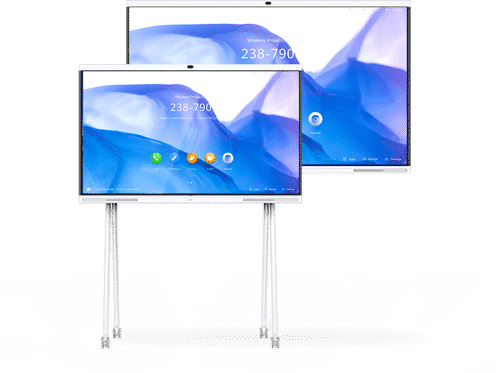The unprecedented acceleration of our digital economy has made digitising work imperative for organisations of every type and size, across every industry. This, in turn, is driving the need for new productivity tools that were designed to help users adapt to this new normal and achieve true synergy and collaboration between their devices and the cloud.
This intelligent collaboration has become a critical enabler of the digital transformation, says James Nel, Huawei Business Unit Manager at Pinnacle. “Intelligent collaboration has also become a vital element of enabling the new way of working in a post-COVID world. It allows staff members to connect, communicate and collaborate with each other, with clients and with third-party partners, in an intuitive, engaging and most importantly, effective way.”
And when one thinks of collaboration, says Nel, the first thing that springs to mind is a whiteboard. “The whiteboard was the first true collaboration tool. Whiteboards enable teams to brainstorm ideas, strategise for the future, draw mockups, and even explain their ideas to fellow employees. Whiteboards are an essential item in most offices, as they help collate all the information and ideas coming from multiple individuals in a single space.”
According to him, over the years, whiteboards have been highly effective. “However, this was only the case before the pandemic swept in and changed the face of work forever. Even in our post-COVID world, an increasing number of organisations are supporting remote work. The pandemic made it clear that employees do not need to be at the office every day of the week, and although there are a slew of benefits to having remote employees, such as lowering overhead expenses like rent and utilities, saving time spent commuting, and many others, there is a downside too.”


Whiteboards can only work when you have team members in the same space, so as entire workforces began working from home, practically overnight, digital solutions were needed to address this challenge. “Having teams scattered around meant whiteboard sessions were skipped, and collaboration returned to a volley of emails going back and forth, which is a cumbersome and ineffective way of working.”
This is where digital whiteboards saved the day, enabling teams to bypass the messy email chain and collaborate effectively once again. “Not only can digital whiteboards show teams all the scribblings and ideas, they can be transformed into a tool that makes meetings infinitely more engaging.”
For example, Huawei’s latest innovation, the IdeaHub, has transformed the whiteboard into a true platform for intelligent collaboration, not only within offices, but for a range of sectors including education, healthcare, and government.
Nel says it does this by integrating intelligent handwriting, high-definition projection, flexible video conferencing, and access to applications in a single, dynamic screen. “In fact, the IdeaHub retools your average whiteboard into an incredibly interactive one boasting features that promise clearer audio, smoother video, and efficient writing. The Pro version comes with a professional-grade 4K camera, which boosts both the streaming and viewing experience of users irrespective of where they are located. In addition, its 12 linear microphone arrays enable the IdeaHub to pick up sound from within an eight-meter radius on a 20-kilohertz full band, which allows users to be heard more clearly.”
In addition, it has a capacity of ultra-low writing latency of a mere 35 milliseconds, which makes writing on a screen both easy and super fast, he explains. “Also, its intelligent handwriting recognition allows users’ writings to be translated to either text or graphics for improved readability.
Over and above being a truly intelligent whiteboard, the IdeaHub makes video conferencing far more professional by merging native 4K and AI technologies. “The AI technologies that have been integrated into the solution bring more focus on the meeting and its attendees. For example, the acoustic baffle feature blocks unnecessary noise from outside of the meeting area, and the intelligent speaker tracking feature can automatically focus on the individual who is currently speaking. It also has the ability to automatically frame the conference view based on the participants.”
He says it offers dual operating system support if the OPS PC is bought with the unit, which gives users access to Android 10.1 on the board and Windows 10 on OPS PC. It also boasts full integration with any Windows based systems, including MS Teams, Zoom, Skype for Business, and Education and Vocational Software.
The IdeaHub can deliver 4K conferencing using the H.265 HD video encoding for less bandwidth usage and up to 60 fps smooth projection, and can also easily switch from one live view to another through SVC multi-stream. “All these incredible features are enclosed within a sleek, user-centric, and elegant design,” he ends. “It is yet one more of Huawei’s innovations that aim to digitally transform offices into both smart and more productive spaces.”

